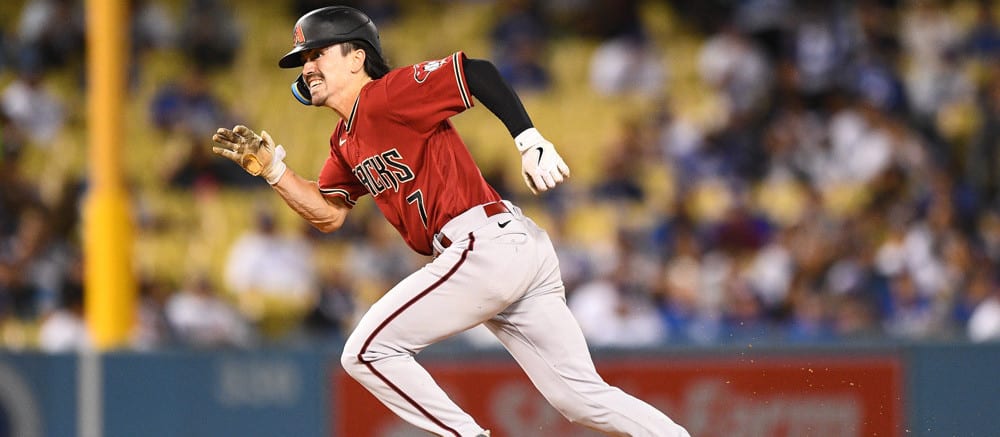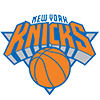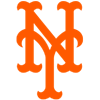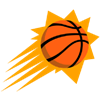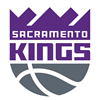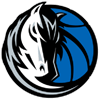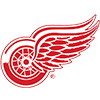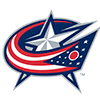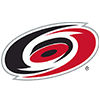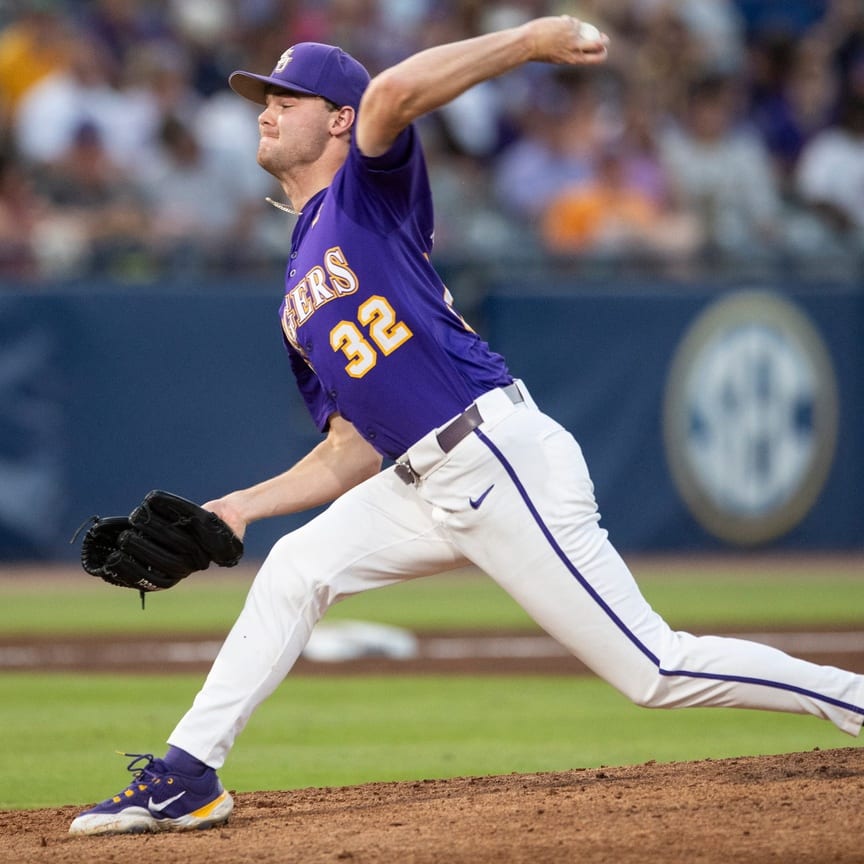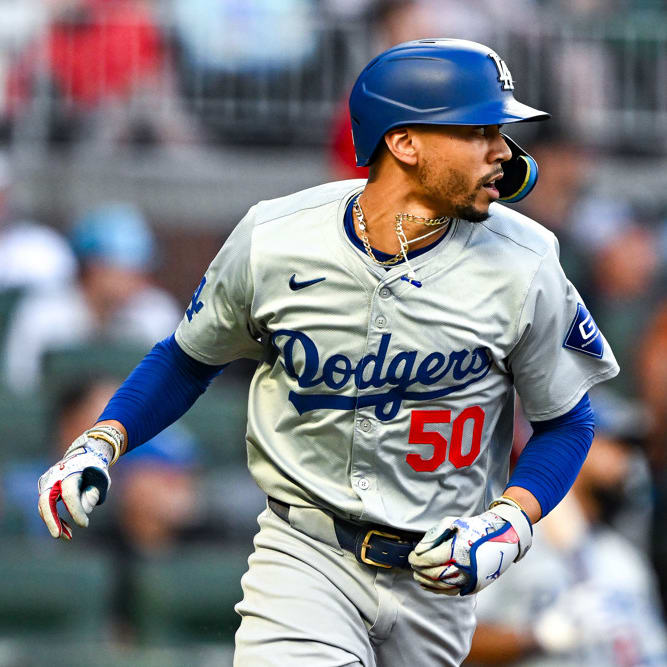The first series of the regular season is in the books, which means we've officially entered overreaction season. While the pressure to beat your league-mates to the next big thing continues to increase in this data-driven age, and while new metrics can highlight those potential next big things earlier than ever before, we're still firmly in the stretch of the season where caution is warranted. As of writing, no batter has come to the plate more than 25 times, and no pitcher has made more than one start.
That makes the first regular-season barometer of the year the toughest one for which to come up with names in many ways, as the ratio of signal to noise is tilted more heavily in noise's favor than it will be at any future point in the campaign. There are certainly meaningful nuggets of information to mine for, and I do stand behind each of the 10 names in today's piece, but caution is warranted. Take last year's first regular-season article for example. There were some wins — Steven Kwan was indeed the real deal, and David Robertson was indeed the closer for the Cubs until getting traded at the deadline — but the article also expressed worries about velocity drops for Shane Bieber and Julio Urias, both of whom would go on to have strong (and healthy) seasons.
I'll get to the usual list of risers and fallers in a minute, based on all the usual early-season factors like velocity changes
The first series of the regular season is in the books, which means we've officially entered overreaction season. While the pressure to beat your league-mates to the next big thing continues to increase in this data-driven age, and while new metrics can highlight those potential next big things earlier than ever before, we're still firmly in the stretch of the season where caution is warranted. As of writing, no batter has come to the plate more than 25 times, and no pitcher has made more than one start.
That makes the first regular-season barometer of the year the toughest one for which to come up with names in many ways, as the ratio of signal to noise is tilted more heavily in noise's favor than it will be at any future point in the campaign. There are certainly meaningful nuggets of information to mine for, and I do stand behind each of the 10 names in today's piece, but caution is warranted. Take last year's first regular-season article for example. There were some wins — Steven Kwan was indeed the real deal, and David Robertson was indeed the closer for the Cubs until getting traded at the deadline — but the article also expressed worries about velocity drops for Shane Bieber and Julio Urias, both of whom would go on to have strong (and healthy) seasons.
I'll get to the usual list of risers and fallers in a minute, based on all the usual early-season factors like velocity changes and role changes more than box-score results, but first a quick note on the rules changes: They're having a huge effect. It's certainly noticeable in terms of average game time, which has dropped from 3:06 to 2:39. But its more fantasy-relevant impact has come on the base paths, where stolen base attempts have predictably exploded. Over the opening weekend, 70 bases were stolen, or one every 57 plate appearances; last season's opening series saw 29 bases swiped, or one every 125 plate appearances.
Steals got considerably more common as the season went on last year, eventually finishing at one every 73 plate appearances. There's a case to be made that they'll only keep rising this year as well. The league-wide success rate during the opening series sat at 83.3 percent, well above last year's 75.4 percent, which suggests there are even more opportunities available for runners who have yet to fully grasp how easy it is to steal this year. It's possible we'll see a big defensive adjustment, but it's even more likely in my eyes is that base runners start taking off even more frequently once they get used to the new reality.
RISERS
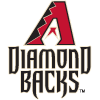 Corbin Carroll, OF, Diamondbacks: I'm not sure there's much to say yet about Carroll at the plate, but to the extent that we care about 18 plate appearances, a homer and a 141 wRC+ is impressive (though seeing him draw a walk eventually would be nice). Carroll is listed here instead because he's the primary beneficiary of a fact that may have gone under-discussed during draft season: Experience playing under these new rules is worth quite a bit, at least early on. Carroll, Anthony Volpe, Jordan Walker and others are playing in the big leagues this season having already played under similar rules in the minors, giving them a leg up on their more experienced teammates. Rookies with base-stealing ability (a group Carroll headlines with his 99th-percentile sprint speed) should already be comfortable timing the pitch clock and taking off at the perfect time, so expect them to run even more frequently than their veteran counterparts over the first few weeks. I was slightly worried that Carroll's two steals in 32 MLB games last year were a red flag, but it looks like they weren't, as he's already surpassed that number.
Corbin Carroll, OF, Diamondbacks: I'm not sure there's much to say yet about Carroll at the plate, but to the extent that we care about 18 plate appearances, a homer and a 141 wRC+ is impressive (though seeing him draw a walk eventually would be nice). Carroll is listed here instead because he's the primary beneficiary of a fact that may have gone under-discussed during draft season: Experience playing under these new rules is worth quite a bit, at least early on. Carroll, Anthony Volpe, Jordan Walker and others are playing in the big leagues this season having already played under similar rules in the minors, giving them a leg up on their more experienced teammates. Rookies with base-stealing ability (a group Carroll headlines with his 99th-percentile sprint speed) should already be comfortable timing the pitch clock and taking off at the perfect time, so expect them to run even more frequently than their veteran counterparts over the first few weeks. I was slightly worried that Carroll's two steals in 32 MLB games last year were a red flag, but it looks like they weren't, as he's already surpassed that number.
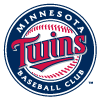 Pablo Lopez, SP, Twins: One of my favorite pages to browse at this very early stage of the season is our velocity changes leaderboard. You're about to see a few pitchers who fall on the bad end of that leaderboard in the fallers section, but Lopez is one of a rare number of pitchers who IS up a noticeable amount early. Lopez's fastball averaged 95.0 mph in his first start, up 1.4 ticks from his average from last season (93.6). That increase is the fifth-highest among pitchers who started a game this season. He's always been someone who has most of the skills you're looking for, posting a career 47.8 percent groundball rate and a 6.8 percent walk rate. His strikeout rate, however, is a fine but forgettable 23.3 percent. He struck out 27.5 percent of opposing batters over 20 starts in 2021, however, leading to a 3.07 ERA, and he could post similar numbers this year if the move to the Twins unlocks something for him. He finished with an affordable NFBC ADP of 168 but could easily outpace that with health and added whiffs.
Pablo Lopez, SP, Twins: One of my favorite pages to browse at this very early stage of the season is our velocity changes leaderboard. You're about to see a few pitchers who fall on the bad end of that leaderboard in the fallers section, but Lopez is one of a rare number of pitchers who IS up a noticeable amount early. Lopez's fastball averaged 95.0 mph in his first start, up 1.4 ticks from his average from last season (93.6). That increase is the fifth-highest among pitchers who started a game this season. He's always been someone who has most of the skills you're looking for, posting a career 47.8 percent groundball rate and a 6.8 percent walk rate. His strikeout rate, however, is a fine but forgettable 23.3 percent. He struck out 27.5 percent of opposing batters over 20 starts in 2021, however, leading to a 3.07 ERA, and he could post similar numbers this year if the move to the Twins unlocks something for him. He finished with an affordable NFBC ADP of 168 but could easily outpace that with health and added whiffs.
 Brendan Donovan, 2B/3B/OF, Cardinals: I liked Donovan during draft season, but mostly as a defensively versatile compiler. He showed great plate discipline as a rookie, finishing with a 12.8 walk rate and 15.0 percent strikeout rate, but he didn't do a lot else offensively, homering five times and stealing two bases in 126 games. He made some adjustments to his stance and bat choice over the winter, however, and the changes appear to have unlocked some power. Through four games, Donovan tied for the league lead with four barrels, a very impressive feat for a player who posted a 3.4 percent barrel rate last season. He also led off in all three games, setting the table for a Cardinals lineup that looks deep and dangerous. Donovan probably won't still be tied with Joey Gallo and Matt Olson atop the barrels leaderboard come season's end, but he had everything in his locker already except for power, and if he's suddenly average or better in that area, he's in line for an excellent season.
Brendan Donovan, 2B/3B/OF, Cardinals: I liked Donovan during draft season, but mostly as a defensively versatile compiler. He showed great plate discipline as a rookie, finishing with a 12.8 walk rate and 15.0 percent strikeout rate, but he didn't do a lot else offensively, homering five times and stealing two bases in 126 games. He made some adjustments to his stance and bat choice over the winter, however, and the changes appear to have unlocked some power. Through four games, Donovan tied for the league lead with four barrels, a very impressive feat for a player who posted a 3.4 percent barrel rate last season. He also led off in all three games, setting the table for a Cardinals lineup that looks deep and dangerous. Donovan probably won't still be tied with Joey Gallo and Matt Olson atop the barrels leaderboard come season's end, but he had everything in his locker already except for power, and if he's suddenly average or better in that area, he's in line for an excellent season.
 Pierce Johnson, RP, Rockies: With Daniel Bard landing on the injured list due to anxiety — good on him for being open about it, and I hope he takes the time he needs to get back to a healthy place — someone will get the chance to fill the debatably valuable void as the Rockies' closer. A winner hasn't officially been announced as of writing, but Johnson is the clubhouse leader by virtue of recording an Opening Day save against the vaunted Padres. He went to Derek Carty for $111 out of $1,000 in NL Tout Wars, which looks like a "likely closer, but on the Rockies" sort of price to me. Johnson has looked good enough to be roughly the third-best reliever on a contender or a potentially closer for a bad team ever since he returned from a year in Japan in 2019. For three straight years, he's recorded a strikeout rate over 31 percent but a walk rate over 1. He's not bad, and he'll probably get a good number of saves if he solidifies the role over his next few outings, but as far as closer jobs go, the one he's likely won is by far the worst.
Pierce Johnson, RP, Rockies: With Daniel Bard landing on the injured list due to anxiety — good on him for being open about it, and I hope he takes the time he needs to get back to a healthy place — someone will get the chance to fill the debatably valuable void as the Rockies' closer. A winner hasn't officially been announced as of writing, but Johnson is the clubhouse leader by virtue of recording an Opening Day save against the vaunted Padres. He went to Derek Carty for $111 out of $1,000 in NL Tout Wars, which looks like a "likely closer, but on the Rockies" sort of price to me. Johnson has looked good enough to be roughly the third-best reliever on a contender or a potentially closer for a bad team ever since he returned from a year in Japan in 2019. For three straight years, he's recorded a strikeout rate over 31 percent but a walk rate over 1. He's not bad, and he'll probably get a good number of saves if he solidifies the role over his next few outings, but as far as closer jobs go, the one he's likely won is by far the worst.
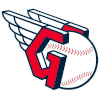 Myles Straw, OF, Guardians: Straw tied for fourth in the league with 30 steals in 2021 but slipped to 21 swipes (tied for 16th) last season. With that total coming with a .221/.291/.273 slash line and a grand total of zero homers, it's unsurprising that Straw finished draft season with an NFBC ADP of 505. A player needs truly special speed to make up for being a genuine zero at the dish, and it wasn't clear Straw fit that category. With four steals in his first five games (as well as five hits, three walks, a hit by pitch and just one strikeout), Straw has put himself back on the fantasy map. Much of the discussion surrounding steals over the winter center on whether there would be a bubble of players who typical projected for eight to 12 steals who could suddenly see an increase out of proportion with the rest of the player pool, but thus far, it looks like if anyone is going to see a disproportionate increase, it might be players like Straw. Through the first five days of the regular season, six players have at least three steals. None had achieved that mark in either of the last two years.
Myles Straw, OF, Guardians: Straw tied for fourth in the league with 30 steals in 2021 but slipped to 21 swipes (tied for 16th) last season. With that total coming with a .221/.291/.273 slash line and a grand total of zero homers, it's unsurprising that Straw finished draft season with an NFBC ADP of 505. A player needs truly special speed to make up for being a genuine zero at the dish, and it wasn't clear Straw fit that category. With four steals in his first five games (as well as five hits, three walks, a hit by pitch and just one strikeout), Straw has put himself back on the fantasy map. Much of the discussion surrounding steals over the winter center on whether there would be a bubble of players who typical projected for eight to 12 steals who could suddenly see an increase out of proportion with the rest of the player pool, but thus far, it looks like if anyone is going to see a disproportionate increase, it might be players like Straw. Through the first five days of the regular season, six players have at least three steals. None had achieved that mark in either of the last two years.
 Trevor Larnach, OF, Twins: Say hello to the Twins' everyday left fielder and cleanup hitter. Larnach may not fill that role against lefties, but his performance in four games against right-handers thus far has been as good as the Twins could ask for. He's hitting .438/.526/.750 with a homer and five RBI. Contact has been a problem thus far in his career, as he carried a 33.5 percent strikeout rate in 130 career MLB games heading into this season, but his strikeout so far sits at 21.1 percent. Larnach has always been able to hit the ball hard, earning 65-grade raw power from FanGraphs and posting a 10.3 percent barrel rate prior to this season, so if he's able to keep the whiffs manageable, there's potential for a real breakout here. He showed flashes in the early part of last season before being derailed by core muscle surgery, and his lineup placement suggests that the Twins expect big things from him this year.
Trevor Larnach, OF, Twins: Say hello to the Twins' everyday left fielder and cleanup hitter. Larnach may not fill that role against lefties, but his performance in four games against right-handers thus far has been as good as the Twins could ask for. He's hitting .438/.526/.750 with a homer and five RBI. Contact has been a problem thus far in his career, as he carried a 33.5 percent strikeout rate in 130 career MLB games heading into this season, but his strikeout so far sits at 21.1 percent. Larnach has always been able to hit the ball hard, earning 65-grade raw power from FanGraphs and posting a 10.3 percent barrel rate prior to this season, so if he's able to keep the whiffs manageable, there's potential for a real breakout here. He showed flashes in the early part of last season before being derailed by core muscle surgery, and his lineup placement suggests that the Twins expect big things from him this year.
 Jason Vosler, 3B, Reds: Playing the "who's the next ____" game is usually a waste of time, and to the extent that it's worth playing, the reward comes from looking at general categories of players. But if we play the "next Brandon Drury" game anyway just for fun, Vosler is the early favorite. Chad Pinder and Nick Solak got most of the attention to that end during draft season, but both now play for Triple-A clubs in other organizations. Vosler, on the other hand, has hit fifth and played first base both times the Reds have faced a righty this season, and he came off the bench to homer Monday against the Pirates, his second of the year. Vosler may be a 29-year-old with defensive limitations and just 81 career MLB games to his name, but his career .236/.309/.467 slash line is good for a 111 wRC+. I wouldn't want to go too far in endorsing Vosler, as neither his 27.0 percent career strikeout rate nor his 6.2 percent barrel rate are strong marks, but he has deep-league viability at a minimum as someone playing regularly at a great park.
Jason Vosler, 3B, Reds: Playing the "who's the next ____" game is usually a waste of time, and to the extent that it's worth playing, the reward comes from looking at general categories of players. But if we play the "next Brandon Drury" game anyway just for fun, Vosler is the early favorite. Chad Pinder and Nick Solak got most of the attention to that end during draft season, but both now play for Triple-A clubs in other organizations. Vosler, on the other hand, has hit fifth and played first base both times the Reds have faced a righty this season, and he came off the bench to homer Monday against the Pirates, his second of the year. Vosler may be a 29-year-old with defensive limitations and just 81 career MLB games to his name, but his career .236/.309/.467 slash line is good for a 111 wRC+. I wouldn't want to go too far in endorsing Vosler, as neither his 27.0 percent career strikeout rate nor his 6.2 percent barrel rate are strong marks, but he has deep-league viability at a minimum as someone playing regularly at a great park.
FALLERS
 Chris Bassitt, SP, Blue Jays: In theory, Bassitt is the ideal sort of veteran compiler who can stabilize a rotation for both a real-life contender and a fantasy team. His 402 innings over the last three years tie him with Joe Musgrove for 22nd in the league, and his 3.13 ERA over that stretch ties him (also with Musgrove) for eighth among pitchers who threw at least that many frames despite his pedestrian 23.2 percent strikeout rate. Stability and reliability in the past don't always equate to stability and reliability in the present, however. It's far too early to give up on him completely, but it's hard not to worry about his disastrous first outing as a Blue Jay. The Cardinals knocked him around for nine runs on 10 hits (including four homers) across 3.1 innings, and he failed to strike out a single batter. While you might be tempted to write that off as just one bad outing, he also lost 1.8 mph on his fastball, which could hint at a potential injury. It may take at least another handful of outings to determine exactly how worried to be about Bassitt, but he may be shaping up to become the latest reminder that even supposedly safe pitching is far from it.
Chris Bassitt, SP, Blue Jays: In theory, Bassitt is the ideal sort of veteran compiler who can stabilize a rotation for both a real-life contender and a fantasy team. His 402 innings over the last three years tie him with Joe Musgrove for 22nd in the league, and his 3.13 ERA over that stretch ties him (also with Musgrove) for eighth among pitchers who threw at least that many frames despite his pedestrian 23.2 percent strikeout rate. Stability and reliability in the past don't always equate to stability and reliability in the present, however. It's far too early to give up on him completely, but it's hard not to worry about his disastrous first outing as a Blue Jay. The Cardinals knocked him around for nine runs on 10 hits (including four homers) across 3.1 innings, and he failed to strike out a single batter. While you might be tempted to write that off as just one bad outing, he also lost 1.8 mph on his fastball, which could hint at a potential injury. It may take at least another handful of outings to determine exactly how worried to be about Bassitt, but he may be shaping up to become the latest reminder that even supposedly safe pitching is far from it.
 Jack Flaherty, SP, Cardinals: Flaherty's first outing was perhaps the worst no-hit, no-run performance you'll ever see: five innings, zero hits, zero runs, seven walks, four strikeouts. Flaherty wasn't someone I targeted during draft season, but I didn't hate him as a last-round pick in shallower leagues. You weren't going to find someone at his price (228 ADP) who had achieved the heights he had, and even if those heights came back in 2019 and were followed by years of injuries, he's still just 27. It was worth a look to see if he had any hope of getting back to something resembling peak form. If you were one of the drafters who took that chance, enjoy the win and the 0.00 ERA you got from him in his debut, but I'd be looking to make other arrangements for the roster spot. Not only did he completely lose the zone, he also averaged just 91.1 mph on his fastball, two full ticks below where he sat last season. Maybe you could justify holding him for one more start, but I wouldn't want him anywhere near the active lineup at the moment.
Jack Flaherty, SP, Cardinals: Flaherty's first outing was perhaps the worst no-hit, no-run performance you'll ever see: five innings, zero hits, zero runs, seven walks, four strikeouts. Flaherty wasn't someone I targeted during draft season, but I didn't hate him as a last-round pick in shallower leagues. You weren't going to find someone at his price (228 ADP) who had achieved the heights he had, and even if those heights came back in 2019 and were followed by years of injuries, he's still just 27. It was worth a look to see if he had any hope of getting back to something resembling peak form. If you were one of the drafters who took that chance, enjoy the win and the 0.00 ERA you got from him in his debut, but I'd be looking to make other arrangements for the roster spot. Not only did he completely lose the zone, he also averaged just 91.1 mph on his fastball, two full ticks below where he sat last season. Maybe you could justify holding him for one more start, but I wouldn't want him anywhere near the active lineup at the moment.
 Jared Shuster, SP, Braves: Shuster entered the spring as an underdog to break camp in the big leagues, as he wasn't on the 40-man roster and had recorded a mediocre 4.25 ERA in 10 Triple-A outings last season, but injuries to Kyle Wright (shoulder) and Michael Soroka (hamstring) gave him the chance to earn a job. After recording a 1.45 ERA and 18:4 K:BB in the Grapefruit League, he was given the chance to start the third game of the year Sunday against the Nationals, but things started to unravel right away. He walked five batters and struck out one across 4.2 frames, allowing four runs, all of which came in the first inning. Despite settling down the rest of the way, he was optioned after the game. He could get another chance soon, but even with Max Fried (hamstring) hitting the injured list, it's Dylan Dodd and Bryce Elder who will be getting the back-end starts for now. If those two have even worse outings, it's possible Shuster gets the next chance, but for now, it looks like he'll continue his development in the minors.
Jared Shuster, SP, Braves: Shuster entered the spring as an underdog to break camp in the big leagues, as he wasn't on the 40-man roster and had recorded a mediocre 4.25 ERA in 10 Triple-A outings last season, but injuries to Kyle Wright (shoulder) and Michael Soroka (hamstring) gave him the chance to earn a job. After recording a 1.45 ERA and 18:4 K:BB in the Grapefruit League, he was given the chance to start the third game of the year Sunday against the Nationals, but things started to unravel right away. He walked five batters and struck out one across 4.2 frames, allowing four runs, all of which came in the first inning. Despite settling down the rest of the way, he was optioned after the game. He could get another chance soon, but even with Max Fried (hamstring) hitting the injured list, it's Dylan Dodd and Bryce Elder who will be getting the back-end starts for now. If those two have even worse outings, it's possible Shuster gets the next chance, but for now, it looks like he'll continue his development in the minors.


